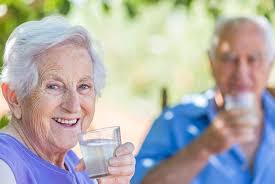
Introduction: As we age, our bodies undergo various changes, making us more vulnerable to certain health risks. Among these risks are waterborne illnesses, which can have serious consequences for older adults. Recently, the Centers for Disease Control and Prevention (CDC) released a report shedding light on the prevalence and impact of waterborne illnesses among the elderly. In this blog post, we’ll delve into the key findings of the CDC’s report and explore measures to safeguard the health of older individuals against these often-overlooked threats.
Understanding Waterborne Illnesses: Waterborne illnesses are caused by ingesting or coming into contact with contaminated water. These illnesses can be caused by bacteria, viruses, parasites, or chemical contaminants present in water sources. Common waterborne pathogens include Escherichia coli (E. coli), norovirus, Giardia, and Cryptosporidium, among others.
The Elderly at Risk: Older adults are particularly susceptible to waterborne illnesses due to age-related changes in their immune systems and underlying health conditions. Additionally, factors such as reduced stomach acid production and medications that weaken immunity can further compromise their ability to fight off infections. Moreover, older individuals may be more likely to have chronic conditions or take medications that affect the gastrointestinal tract, increasing their susceptibility to waterborne pathogens.
Key Findings from the CDC Report: The CDC’s report highlights several concerning trends regarding waterborne illnesses in the elderly:
- Increased Incidence: The report indicates a rising number of waterborne illness cases among older adults in recent years.
- Severity of Symptoms: Older individuals affected by waterborne illnesses often experience more severe symptoms and complications compared to younger individuals. Dehydration, electrolyte imbalances, and kidney problems are particularly common in this age group.
- Outbreaks in Healthcare Settings: The report identifies healthcare facilities as potential hotspots for waterborne illness outbreaks among the elderly. Inadequate water management practices and aging infrastructure contribute to the risk of contamination within these settings.
- Underreporting: Due to factors such as atypical symptoms and delayed diagnosis, waterborne illnesses in the elderly may be underreported, leading to a lack of awareness and appropriate preventive measures.
Protecting Older Adults: Given the heightened vulnerability of older adults to waterborne illnesses, it’s essential to take proactive steps to mitigate risks and safeguard their health:
- Water Quality Testing: Regular testing of drinking water sources in homes, healthcare facilities, and community settings is crucial for detecting contaminants and ensuring water safety.
- Education and Awareness: Providing information to older adults, caregivers, and healthcare professionals about the risks of waterborne illnesses, symptoms to watch for, and preventive measures can empower them to take appropriate precautions.
- Enhanced Hygiene Practices: Encouraging proper hand hygiene, especially before eating or handling food, can help prevent the spread of waterborne pathogens.
- Protecting Yourself and Your Family: Investing in a Whole House Physical Water Processing System to reduce the contaminants and pathogens the local municipality doesn’t treat for is another preventative step seniors and their families can take to protect their health. Water Quality Testing mentioned in point #1 will show which contaminants and pathogens are present in your homes water. www.hanishwater.com/
- Vaccination: Where applicable, vaccination against certain waterborne pathogens, such as hepatitis A and typhoid fever, can offer additional protection to older individuals, especially those with underlying health conditions.
Conclusion: Waterborne illnesses pose a significant threat to the health and well-being of older adults, necessitating concerted efforts to address and mitigate these risks. By raising awareness, implementing preventive measures, and investing in infrastructure and healthcare practices, we can better protect the elderly from the adverse effects of waterborne pathogens. Let’s work together to ensure that our seniors can enjoy clean and safe water, free from the burden of waterborne illnesses.
HEALTHY WATER FOR HEATLHY FAMILIES.
